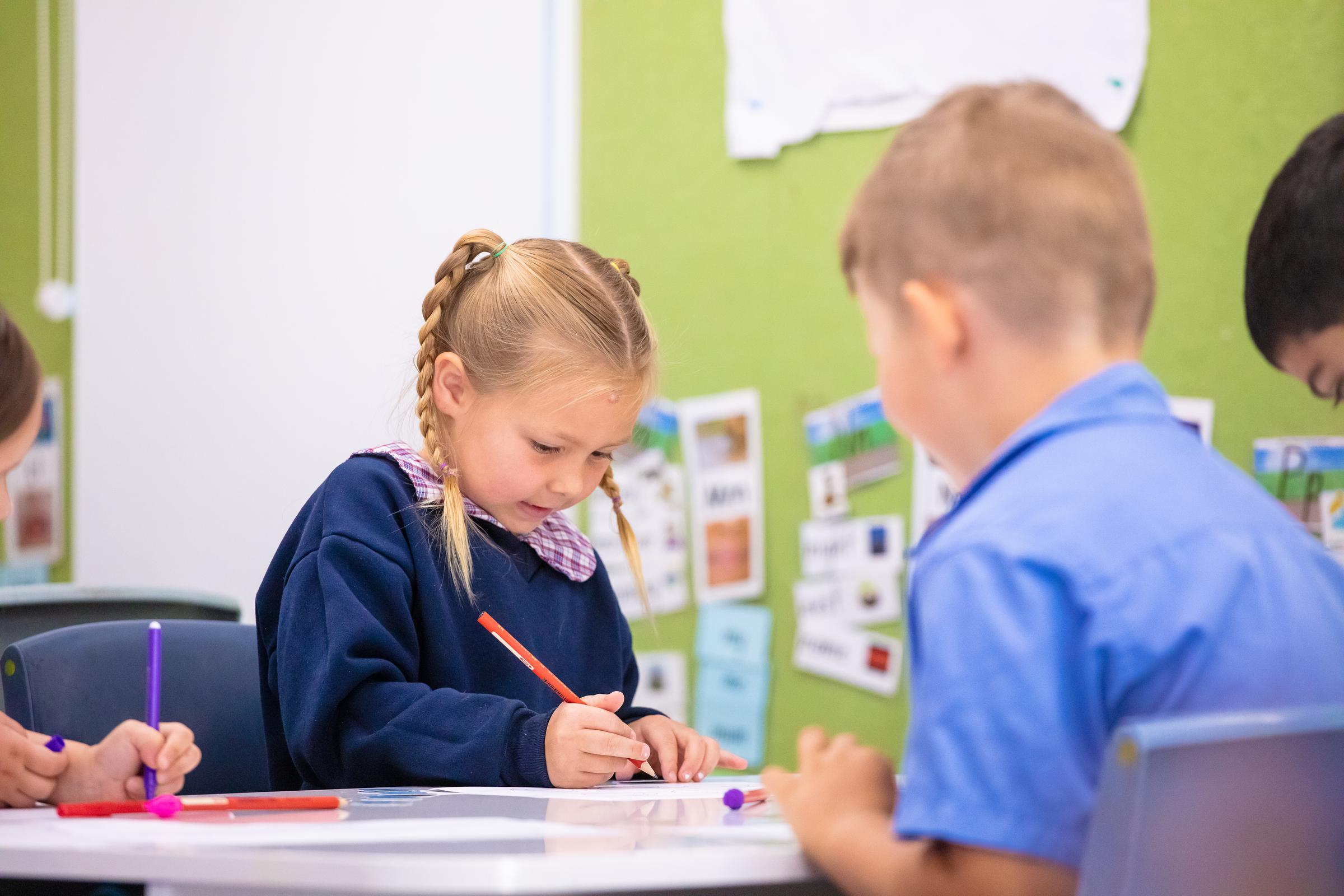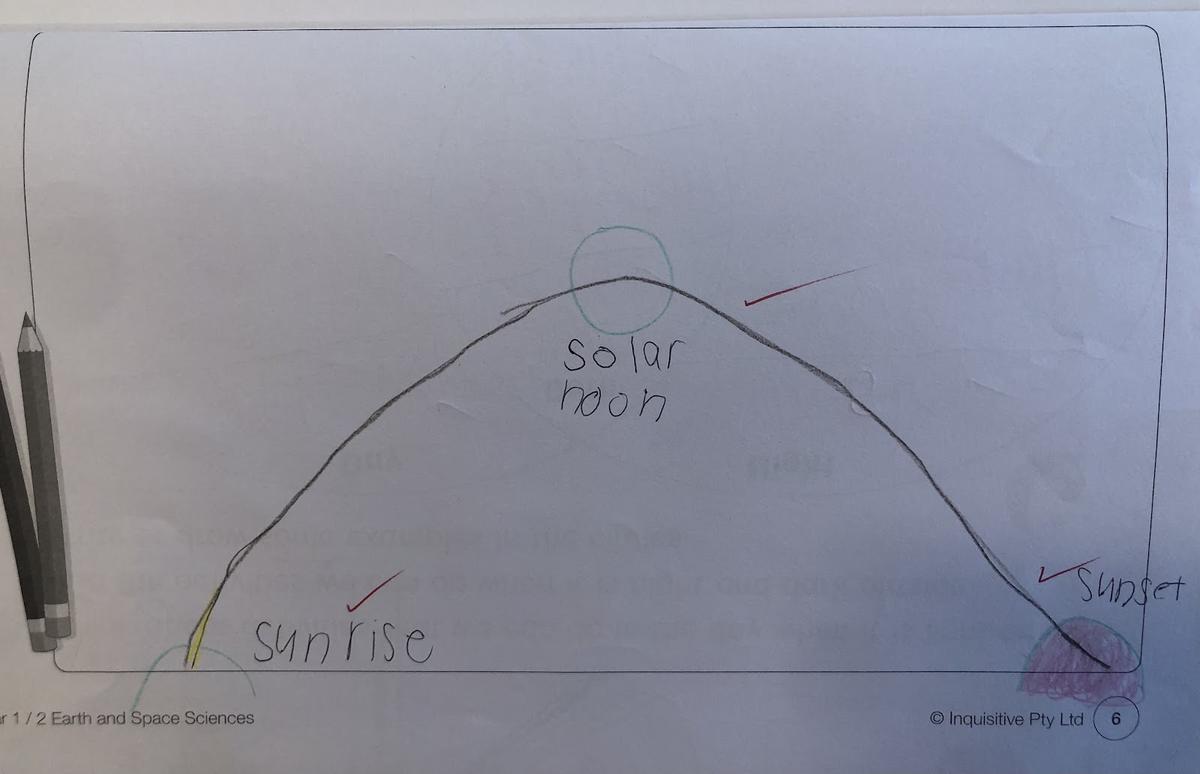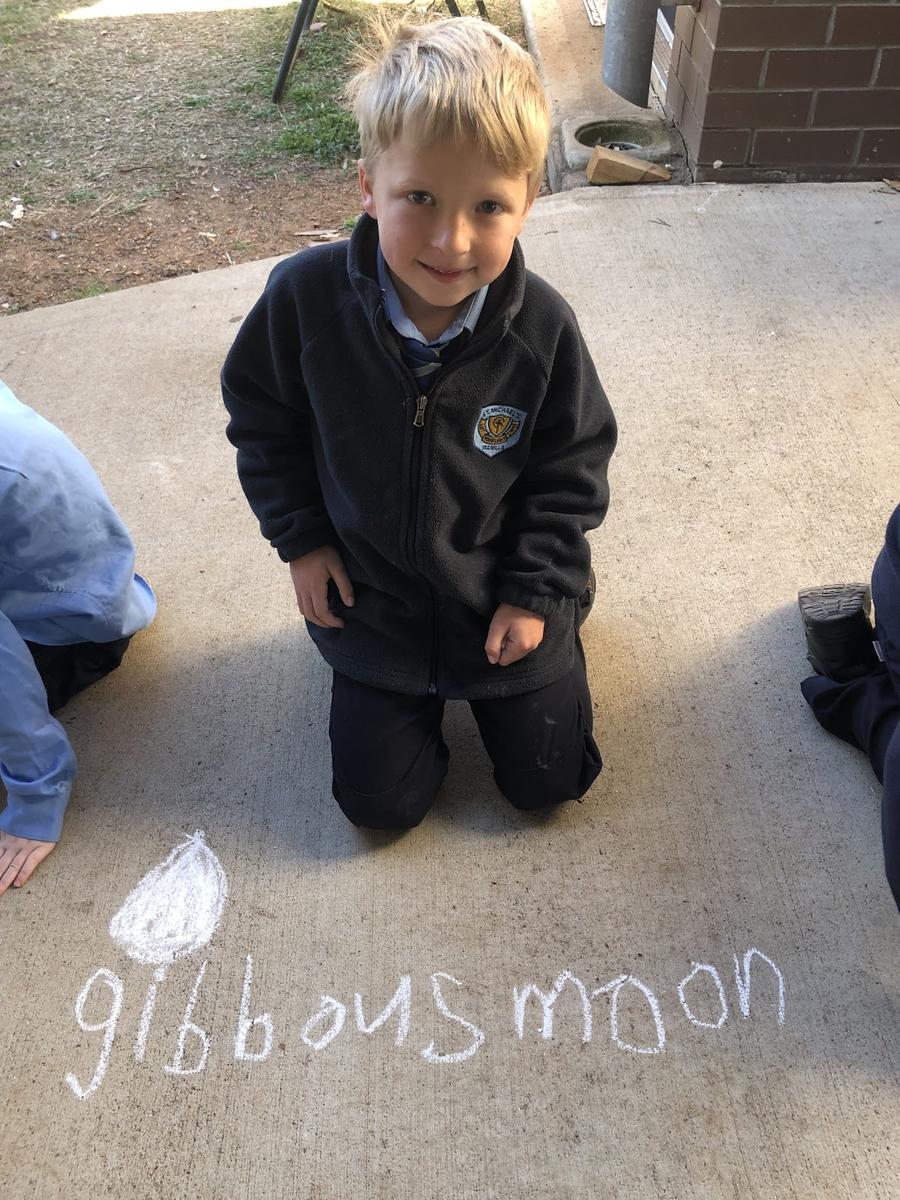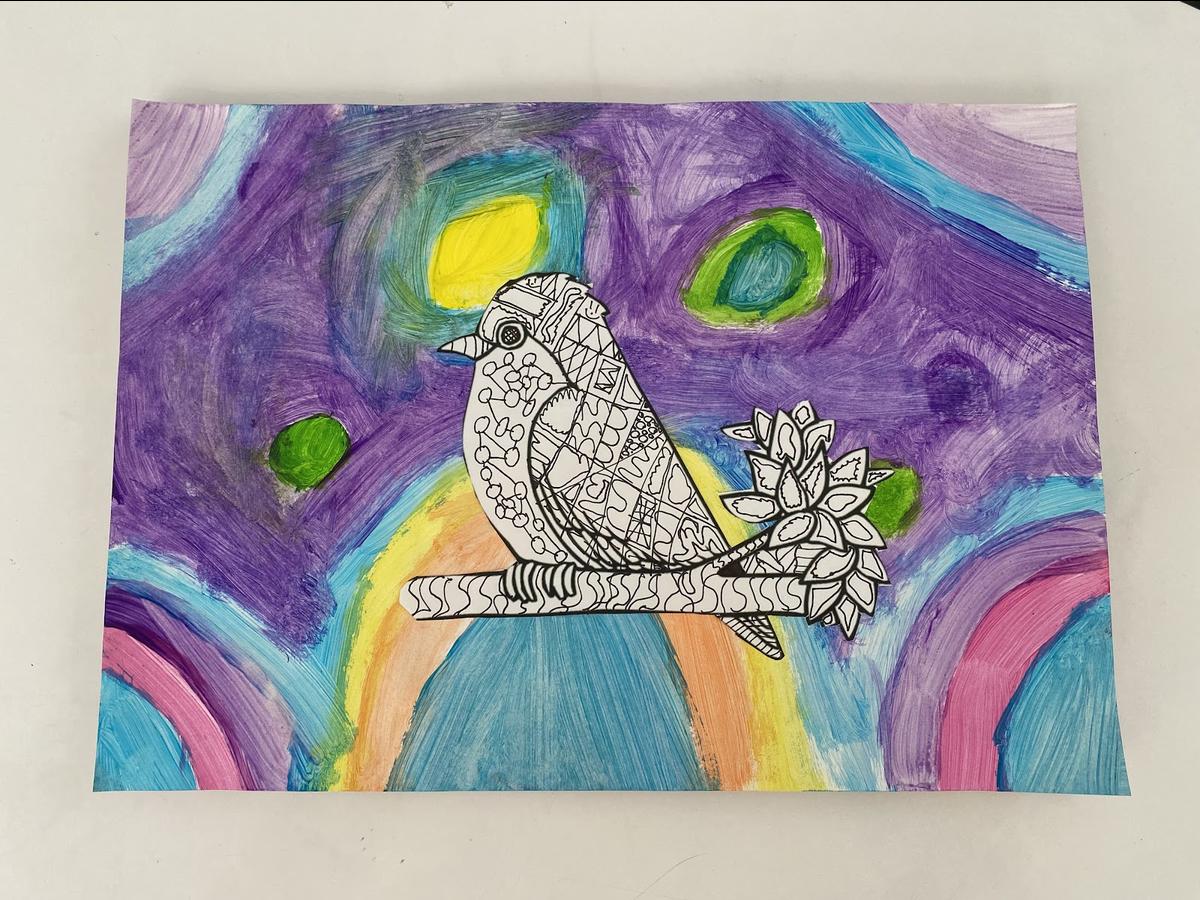Learning News

Learning News Term 3, Week 1
Welcome back to Term 3 of learning at St Michael’s. It’s been a busy first week with teachers undergoing professional development on Religious Education on the first day, NAIDOC celebrations and athletics practise, but our students have settled back into their classroom routines and are working hard.
Many of our classes are working on recounts - both factual and personal. A recount describes a true experience or event that has actually happened. The events are retold to entertain or report to an audience, or both. A factual recount is different from a personal recount as it is told from someone else's view and “I” is not used in the writing. However, many of the features are the same, such as time connectives (first, yesterday, then, after) and order of events.
We hope you enjoy reading the work samples from our hard working students.
Yours in learning,
Mrs Shepherd
Kindergarten
In English, Kindergarten read the storybook The Ugly Duckling. We worked on retelling the stories ‘beginning’, ‘middle’ and ‘end’. We have also been working on using describing words in our sentences. The children worked hard on writing sentences describing the Ugly Duckling. Good work Kindergarten! Miss Fraser is proud of you!
Year 1
In this term’s Science and Technology unit, Year 1 students have investigated changes that occur in the sky and on the land. They have learned about the sun’s path and how it follows the same pattern through the sky: starting with sunrise, then solar noon when the sun is at the highest point of the day, and finishing with sunset. They have observed that the landscape changes and becomes darker as the day turns into night. Next they looked at the appearance of the moon and stars at night. They learned about four main phases of the moon (crescent moon, half moon, gibbous moon and full moon) and drew them outside with chalk. They have also learned that a group of stars is called a constellation. They enjoyed looking at The Lyra and The Southern Cross. They were then challenged to design their own constellations using mini marshmallows and toothpicks. What clever little scientists you all are Year 1!
Miss Myers
Year 2/3
This week, Year 2/3 have been hard at work creating a Healthy Eating advertisement as part of our PDHPE program. Working in groups the students first had to decide what message they wanted to send in their advertisement and develop a rough script. Using this they then had to film the acting parts of their advertisement. Many thanks to our friends in Year 5/6 for their support in filming and using iMovie to edit and refine our fantastic Advertisements. Fantastic work Year 2/3.
Mr Beaumont.
Year 4
This week in Creative Arts, the students have been learning how to play the ukulele. To begin with, the students learnt about the different parts of the ukulele and where the instrument originated from. Next they learnt the chords of C & F and a simple strumming pattern. Using these chords, the students played the songs of ‘Kookaburra Sits in the Old Gum Tree’, ‘Row Row Row Your Boat’ and some other simple songs. We will continue to learn about the ukulele and more songs for the next five weeks. Great Work Year 4!
Miss McDonald & Miss Maunder.
Year 5/6
To begin Term 3, year 5/6 have created a contrasting artwork by using black and white patterns against bright colours. This task required students to carefully use the paint brushes to paint their circles on their page, taking into consideration the colours they were going to use to create a pattern. The students used permanent markers to create zentangle patterns to fill in the image of the robin bird. The students had a lot of fun creating their masterpieces and they look amazing! Well done stage 3!
Numeracy News Week 2 Term 3
Numeracy News
Forming Groups
Forming groups focuses on using groups to solve multiplication problems.
Some tips for exploring forming group with your child include:
- playing skip counting games or taking turns to count by 2s, 3s, 5s, and 10s
- using 5c, 10c or $2 coins to skip count money
- drawing a skip counting hopscotch path with chalk. Use the hopscotch path in reverse to skip count backwards.
- using sticky dots, textas, M&Ms, playdough or Lego to make groups and getting children to write the repeated addition facts to match.
- use paddle pop sticks to create groups and add them together to multiply and find your answer.
- try a 100s chart and colour in the numbers as you add on top of them to find the answer to your question. Can you find any patterns?
- arrays are a grid-like pattern. Explore around you and find arrays! It could be a bookshelf, the kitchen drawers or the plates laid at the dinner table. Work out what these arrays are (their rows and columns) and their answer if they were multiplied.
- a fun way to show arrays is to bake some muffins or cookies and multiply the rows and columns to work out how many you will make.
- make arrays with items around the house. Challenge yourselves to see who can make the arrays in the fastest time!
Multiplication
Times tables are a brilliant brain-training exercise for students. Good times-tables knowledge is vital for quick mental maths calculations and problem solving, e.g. if a child knows that 6 x 3 = 18 they will be able to work out that 6 x 30 = 180 or 60 x 3 = 180 almost instantly.
Useful items to help your help your child with times tables at home include:
- A stack of coins – at least a dozen each type of coin, and preferably two dozen $2.00, will let you make up a full set of tables to 12x12 for the occasions when your child might need to go back and check by counting. No cost, beyond the time it takes to collect up the change.
- A pack of cards – take out the aces and Kings, count Jack as 11 and Queen as 12, and you can practise the full range of tables by dealing your child two cards and asking them to multiply them.
- A pack of blank cards (make them out of cardboard or paper, or buy premade versions) These are infinitely versatile. You can write down whatever items your child has problems with and make Pelmanism sets with questions and answers. (Write the questions and answers on different cards. Shuffle and turn the cards face down. The child has to turn over a card, then turn over the matching card. You can start with a small number of sets and build up.) How many card questions can your child answer correctly against the clock? Boys very much enjoy this, but so do most girls.
- Numicon – a system comprising a baseboard and coloured tiles of between one and ten units. Many uses in early maths, including building up tables through a series of tiles. Not cheap, but it makes illustrating an idea very easy, and the consistency of the tiles builds up a sense of number, so that children think, say, in threes rather than just counting.
Kindergarten
These past two weeks, Kindergarten have been learning to subitise! Subitising involves instantly recognising a number of objects without the need to count them. We have specifically been working on instantly recognising dot patterns including on dice and dominoes. Kindergarten have been playing different hands-on games to support their subitising skills. These games have involved flashing a dot pattern and students recreating the pattern by making or drawing what they saw. We have been improving our recognition and have worked on explaining what patterns we see when subitising. Wonderful work Kindergarten!
Miss Fraser.
Year 1
Year 1 have been learning about skip counting and how it is a faster way to count large collections of things. We have been focusing on counting by 2s, 5s,10s and 3s. First we learned to skip count with hundred charts and found many different patterns skip counting can make. We have been doing lots of fun activities to help us skip count such as hand painting, Buzz Off, hopscotch and number chart puzzles. Fantastic work Year 1!
Miss Myers
Year 2/3
This week Year 2/3 have been looking at representing and counting amounts of equal groups. To do this we have broken down the language when working with groups of objects and looked to create, draw and represent our understandings. We have also been practising our skip-counting skills to assist in our calculations. Well Done Year 2/3.
Mr Beaumont.
Year 4
For the past two weeks, Year 4 have been learning about division. The students have learnt about the connection between multiplication and division through solving inverse relationship questions. They have also extended their division knowledge by solving more complex division questions through the use of expanded notation and using the long division strategy. Great Work Year 4!
Miss McDonald & Miss Maunder.
Year 5/6
Stage 3 has been learning about the Cartesian Coordinate system and how to plot and record coordinates on a number plane. Students applied their knowledge and skills to create a Break The Code activity by plotting letters in the four quadrants of the number plane and writing a set of coordinates to write out a secret message. Students then set out to uncover the secret messages of others in the room. Fabulous work Stage 3!
Miss Summerell & Miss Rasche



































